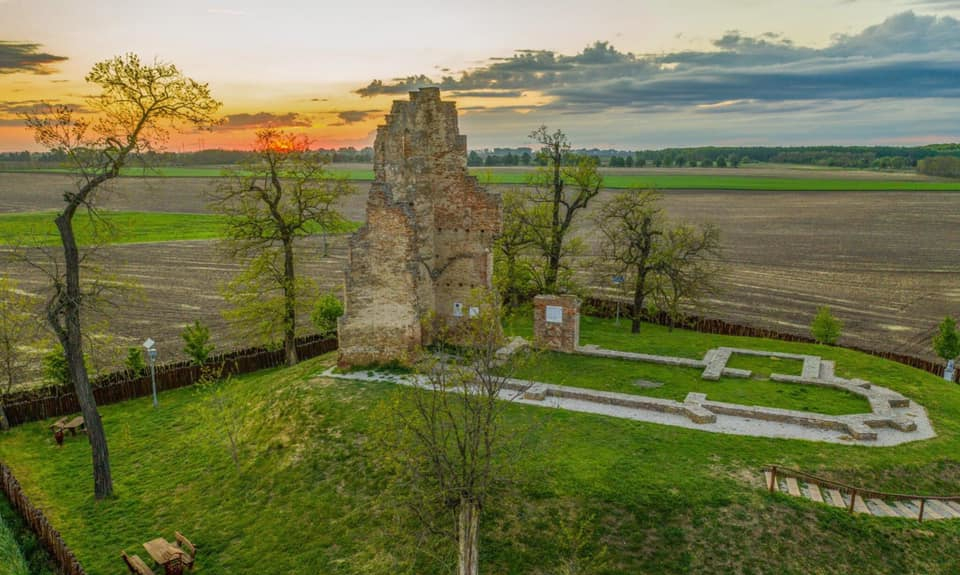The ruins of the medieval church of Zelemér in Hajdúböszörmény are a remnant from the Árpádian era and are impressive even in their “ruin” state.
The origins of the building are linked to the decree of Stephen I, also known as King Saint Stephen, which said that every tenth village should build a church. As a result, the first Romanesque church of Zelemér was built. In subsequent years during the Tartar invasion, many settlements were depopulated and churches collapsed. What remains of the church, which can still be seen today, was constructed around 1310.
It was a medieval church of unusual size, built in a Gothic style, and in all likelihood would have been decorated in the style of the times. While the decoration has been lost, the masonry, scale, and architecture still impress. The church would probably have had gothic windows, and inside, in a manner typical of the architecture of the time, the building would have been adorned with a Gothic carved vault.

In 1564, Hassan, one of the leaders of the Turkish armies who came to help John Sigismund Zápolya, robbed it and set it on fire. In the following centuries, the stones of the church were stolen. Now only an 18-meter truncated part and a small piece of its northern wall remained from the approximately 30-meter-high church tower.
The church has been classified as a monument since 1907. Between 1938-41, the ruins were excavated and preserved under the supervision of the director of the Déri Museum. Excavations in 1938 also found human remains, indicating that they were once buried around the hill, as you might expect at a church.
Since 1981 the site has been protected as a site of local significance. Following a renovation in 2014, the church was surrounded by a wooden fence, and the area was landscaped.
There are several legends about Zelemér, one of the most famous being the story of the beautiful Maricza. According to sources, the Serbian prince György Brankovics lived here and got engaged to Maricza. An older soldier Danilo also fell in love with her and professed his love on the top of the bastion one night. To preserve her innocence, Maricza rather chose death and dragged the savage leader with her.
On the anniversary of the death of a beautiful Maricza, one or two white shadows appeared, several times at the bottom of the church tower in Zelemér, looking uneasily for something. In addition, there is a 3-meter-high statue of St. Stephen at the base of the hill guarding the ruins.
Locals believe it is a spiritual place, a positive one. Today there is a 3-meter-high statue of St. Stephen at the base of the hill guarding the ruins.
The ruin has become a popular tourist destination today, which is no longer only visited by visitors just from Hajdú-Bihar county.